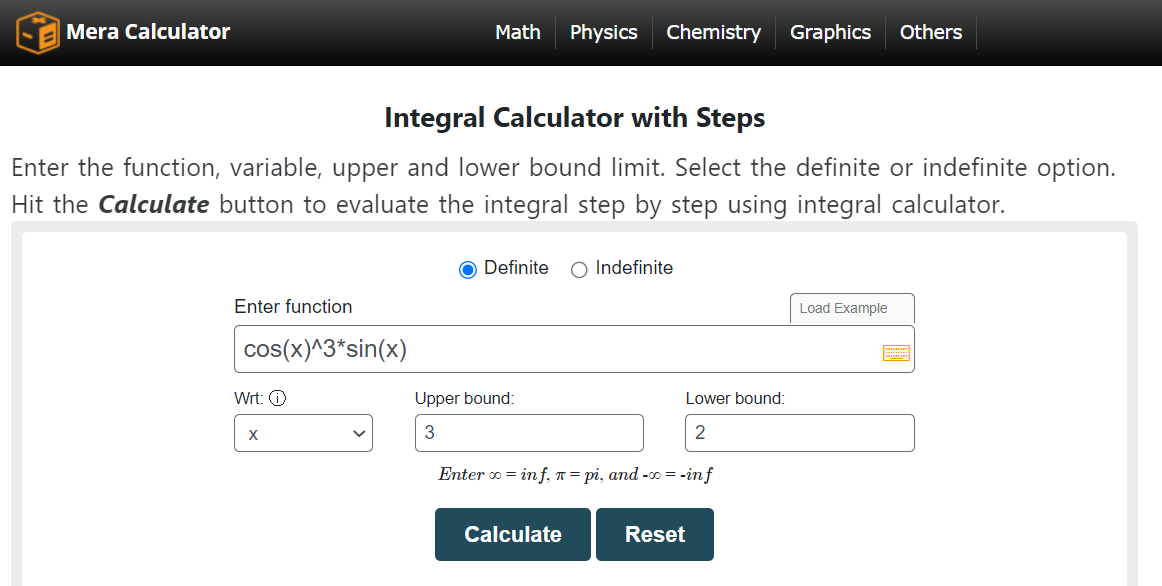In calculus, the integral is one of the main branches of calculus that is widely used to calculate the area of the curve. This subtype of integral has further divided into two types one is the definite integral and the other is the indefinite integral.
Students face difficulties while integrating the functions manually due to larger and more complex calculations. In this post, we are going to explain the methods to integrate the functions along with examples and solutions.
What is integral and how to integrate it?
In calculus, a term that is used to evaluate a new function or the numerical value of the function with respect to the integrating variable is known as integral. The process of integrating the function is known as integration.
It is generally used to evaluate the area under the curve. The rules and formulas of the integration are helpful in integrating the functions with the help of the corresponding variable of the function.
The new function that is evaluated by integrating the function whose original function is derivative is known as the indefinite integral. The constant of integration must be written along with the new function in this type of integral.
The numerical value of the function that is evaluated by placing the upper and lower limit values to the integrated function is known as the indefinite integral. The fundamental theorem of calculus is applied to enter the upper and lower limit values of the function.
Follow the below steps to integrate the function.
- First of all, take the given function and integrate the variable.
- Apply the notation of integration to the function.
- Apply the sum and difference rules of integration and write the notation of integral to each function separately.
- Take out the constant coefficients outside the integral notation.
- Integrate the functions by using power and trigonometry rules of integral.
- Apply the limit values to the integrated function in the case of the definite integral.
Formulas of integral in calculus
The formula for evaluating the new function (indefinite integral) is:
The formula for evaluating the numerical value of the function (definite integral) is:
An integral calculator can be used to integrate the function according to the above formulas to calculate the new function or the numerical value of the function.
Examples of integral calculus
Here are some examples of integral calculus to learn how to integrate the functions. The rules are very essential in calculating the numerical values and new functions.
Example 1: For the indefinite integral
Integrate the given function with respect to .
Solution
Step 1: First of all, take the function f(y) and the integrating variable that is corresponding to the function. After that apply the notation of integral to the given function.
Integrating variable =
Step 2: Now apply the notation of integral to each function separately to each function with the help of the sum and difference rules of integral calculus.
Step 3: Now take out the constant coefficients outside the integral notation.
Step 4: Now integrate the above expression with the help of power and trigonometry laws of integration.
Example 2: For the indefinite integral
Integrate the given function with respect to
Solution
Step 1: First of all, take the function f(z) and the integrating variable that is corresponding to the function. after that apply the notation of integral to the given function.
integrating variable
Step 2: Now apply the notation of integral to each function separately to each function with the help of the sum and difference rules of integral calculus.
Step 3: Now take out the constant coefficients outside the integral notation.
Step 4: Now integrate the above expression with the help of the power law of integration.
Step 5: Now use the fundamental theorem of calculus to apply the upper and lower limit values to the above-integrated value.
![]()
![]()
![]()
![]()
![]()
![]()
![]()
![]()
![]()
Conclusion
Now you can integrate any function by following the above formulas and solved examples of the integral calculus. We have discussed almost every basics of the integral calculus and take care of the intent of the article.



![Rendered by QuickLaTeX.com ʃ [2y4 + 4y6 - 12y3 + 3cos(y) + 7y - 2] dy = ʃ [2y4] dy + ʃ [4y6] dy - ʃ [12y3] dy + ʃ [3cos(y)] dy + ʃ [7y] dy - ʃ [2] dy](https://www.mathacademytutoring.com/wp-content/ql-cache/quicklatex.com-1caaf13a8c0a3220c25b400d69e1e519_l3.png)
![Rendered by QuickLaTeX.com ʃ [2y4 + 4y6 - 12y3 + 3cos(y) + 7y - 2] dy = 2ʃ [y4] dy + 4ʃ [y6] dy - 12ʃ [y3] dy + 3ʃ [cos(y)] dy + 7ʃ [y] dy - ʃ [2] dy](https://www.mathacademytutoring.com/wp-content/ql-cache/quicklatex.com-3f718f12437e1c20381863932652d13e_l3.png)
![Rendered by QuickLaTeX.com = 2 [y4+1 / 4 + 1] + 4 [y6+1 / 6 + 1] - 12 [y3+1 / 3 + 1] + 3 [sin(y)] + 7 [y1+1 / 1 + 1] - [2y] + C](https://www.mathacademytutoring.com/wp-content/ql-cache/quicklatex.com-22ee5ef82b7a36633a19ed378147fc7e_l3.png)
![Rendered by QuickLaTeX.com ∫_1^2 = [3z + 4z3 - 4z5 + 2z3 - 2z + 1] dz = ∫_1^2 = [3z] dz + ∫_1^2 = [4z3] dz - ∫_1^2 = [4z5] dz + ∫_1^2 = [2z3] dz - ∫_1^2 = [2z] dz + ∫_1^2 = [1] dz](https://www.mathacademytutoring.com/wp-content/ql-cache/quicklatex.com-ff73e56116664fbe72c9719bba179ac4_l3.png)
![Rendered by QuickLaTeX.com ∫_1^2 = [3z + 4z3 - 4z5 + 2z3 - 2z + 1] dz = 3∫_1^2 = [z] dz + 4∫_1^2 = [z3] dz - 4∫_1^2 = [z5] dz + 2∫_1^2 = [z3] dz - 2∫_1^2 = [z] dz + ∫_1^2 = [1] dz](https://www.mathacademytutoring.com/wp-content/ql-cache/quicklatex.com-8694c9f758dc71e34341976779bb0d30_l3.png)
![Rendered by QuickLaTeX.com = 3 [z1+1/ 1 + 1]21 + 4 [z3+1/ 3 + 1]21 - 4 [z5+1/ 5 + 1]21 + 2 [z3+1/ 3 + 1]21 - 2 [z1+1/ 1 + 1]21 + [z]21](https://www.mathacademytutoring.com/wp-content/ql-cache/quicklatex.com-50ed5def628203950b46412372f1ce1e_l3.png)